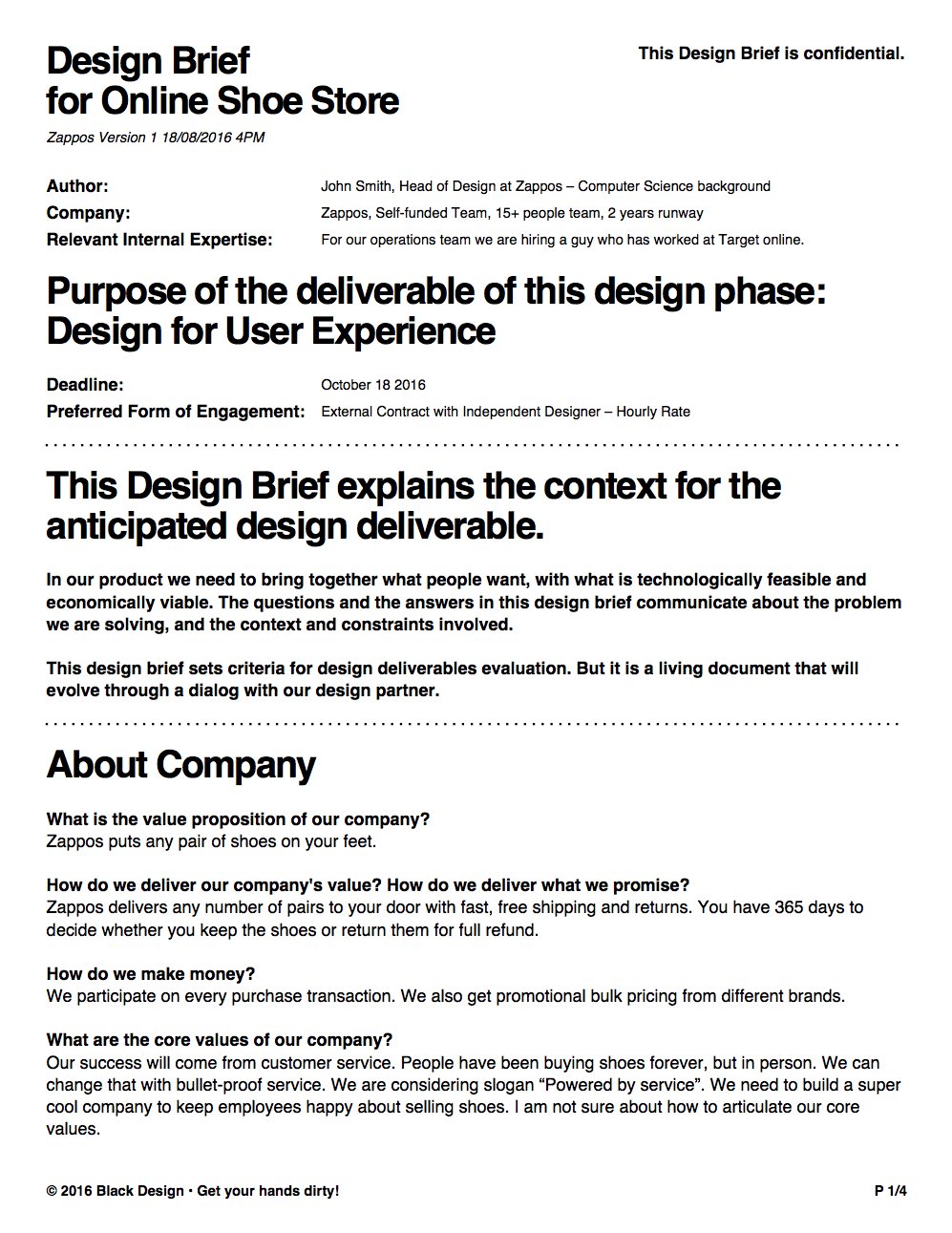Black Design
Get your hands dirty!Design Brief Tool (Beta)
Tool for engagement with designers & description of product context.

Designers bring together what people want, with what is technologically feasible and economically viable. To do that successfully, they need to learn about the full context of the anticipated product solution. The purpose of a design brief is to provide this context. Engaging a designer without a specific design brief often results in an expensive attractive box that solves somebody else's problem, if any.
Our Design Brief Tool encourages you - the founder and the product visionary - to focus on explaining the product context, rather than forcing a particular design solution on a designer.
A design brief also sets criteria for design concept evaluation. Because it is essentially a collection of mostly pragmatic references, it helps neutralize any personal biases. Designing is a magical act of negotiating often contradictory demands in order to transform a vision into a well-balanced product. A design brief incentivizes constructive dialog between founders and designers throughout this organic creative process. Nobody loses control.
Having a design brief enables founders to recognize the right design partner. The right designer will appreciate the creative challenge of fitting an uncompromised solution into a tight space defined by many startup constraints.
Creating a design brief is a worthwhile effort whether you are looking to engage a designer or not. The process uncovers gaps in founders’ understanding of their product’s context. Early-stage founders work closely together. They organically evolve their venture via spontaneous dialog. A design brief is usually the first organized record about their business. It enables founders to communicate to the outside world about the problem they are solving, and the context and constraints involved.
